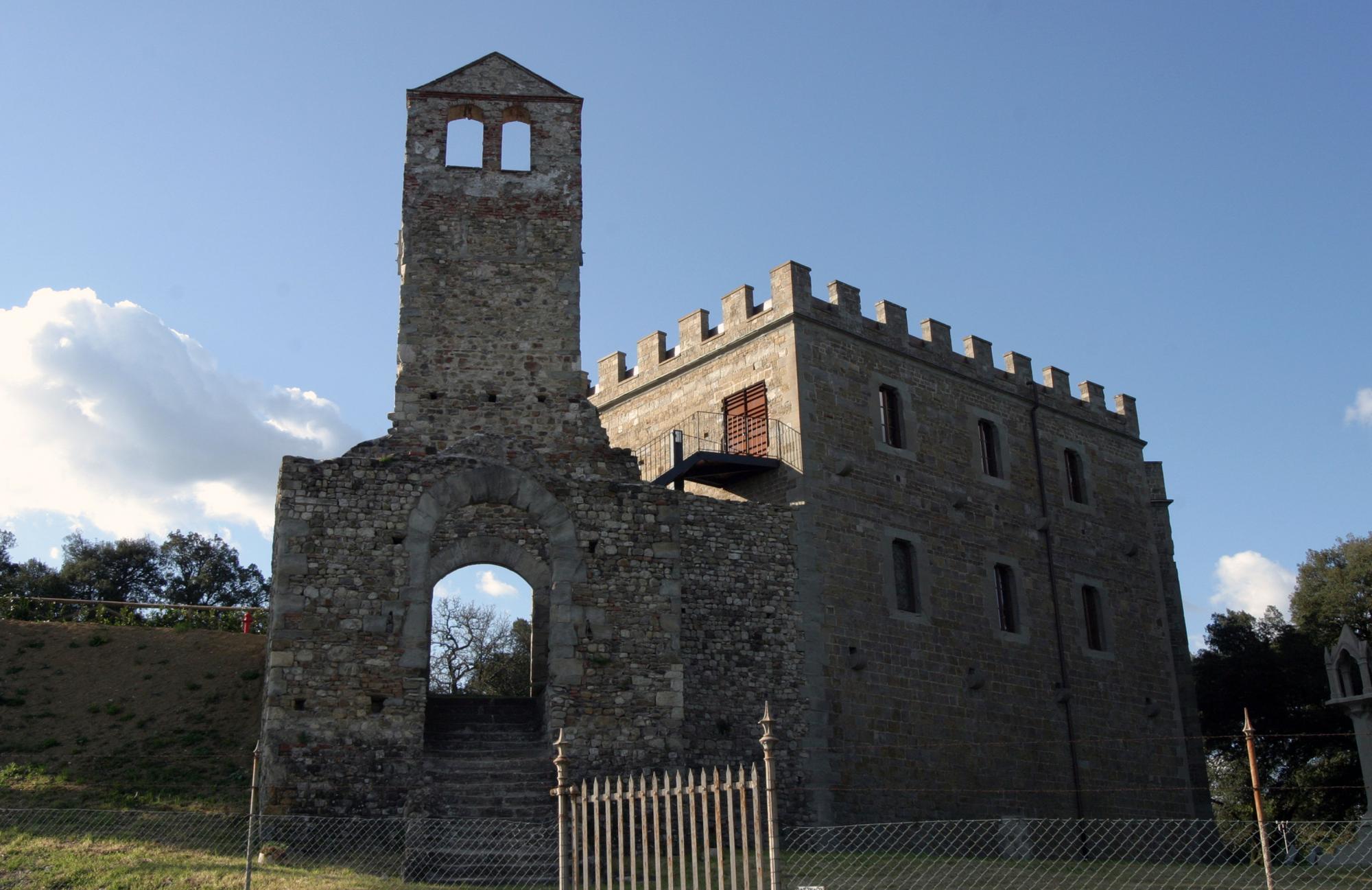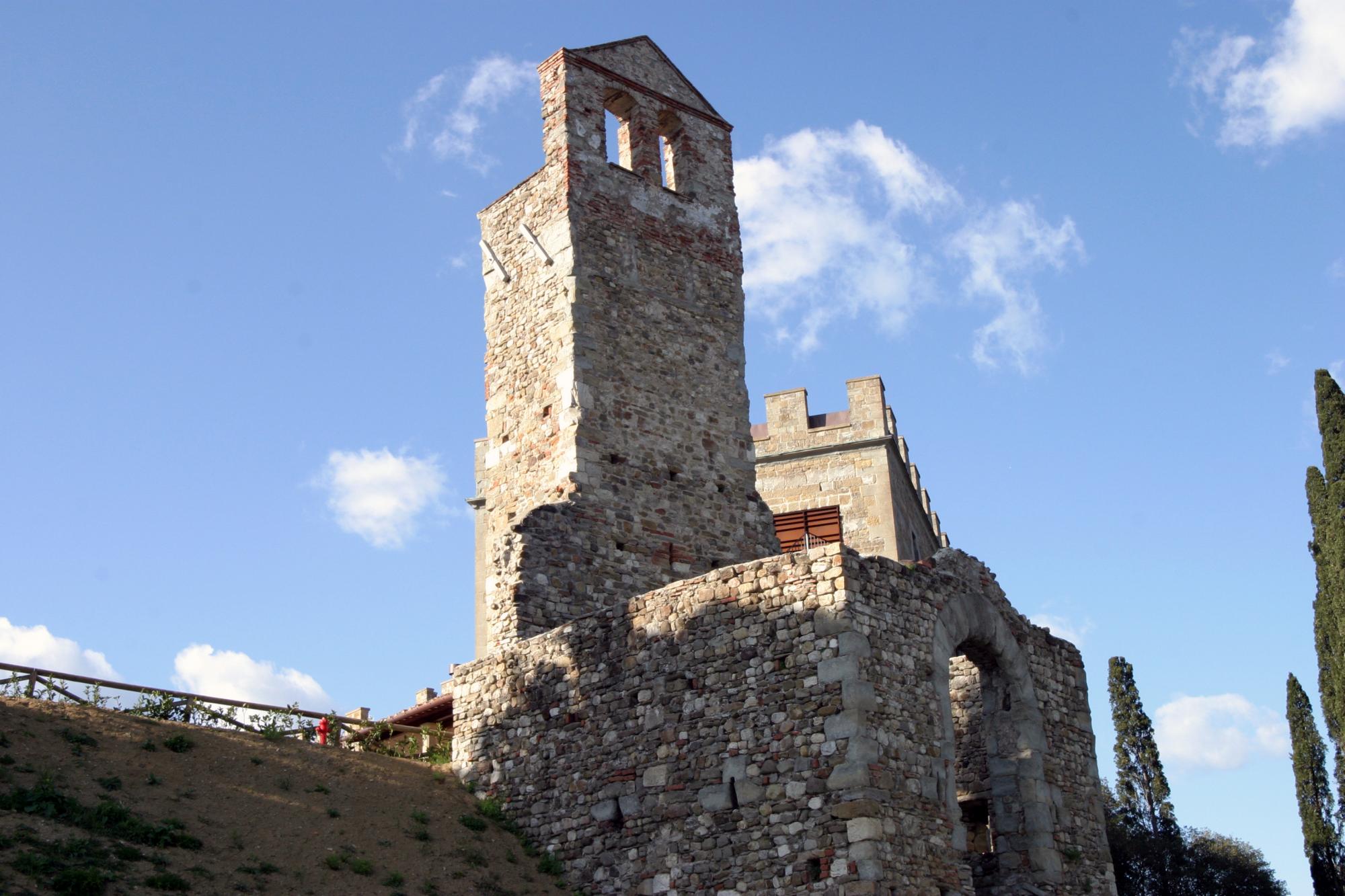





How to reach
From Florence follow the road SS65 toward S.Piero a Sieve - Passo della Futa (Mugello). The little castle will appears on your right a few hundred meters before the famous 'Villa le Maschere'.
History
The 'Castelletto di Villanova' is nowadays an unusual Neo-Gothic building erected on the ruins of the ancient Villanova Castle. Of the original medieval structure remain a rectangular-shaped tower [then transformed into a bell tower], two gates (the main gate still gifted with a beautiful stone staircase), and a little part of the walled curtain that encircled the ovoidal motte where the rest of the castle rose. Inside the walls were the San Jacopo Church [1331] and other buildings, which have now disappeared.
Around the year 1250, the castle was the fief of the Ubaldini family, called 'da Villanuova', then of the Bettini family. Villanova is represented in the ancient maps called 'Piante di Popoli' and 'Strade dei Capitani di Parte Guelfa' edited between the years 1582 and 1586. The castle and its church were bought in 1611 by the Marquise Ottavio Gerini and incorporated into the park of Villa Le Maschere, one of the biggest country villas in the Mugello area. The actual castle, rebuilt in neo-medieval style by Carlo Gerini, was first a school for the children of the nearby farms and then a nunnery.
During the Second World War, it was completely abandoned. The restoration of the main gate with the tower and the stone staircase was carried out in 1990 to prevent the definitive loss of the building.
The property, the avenue of cypress trees that frames the entrance, and the park have been the subject of a recovery plan aimed at its transformation for use as a venue for ceremonies, conventions, shows, and a restaurant. The intervention, through the careful study of the characteristics of the property complex, in compliance with the constraints placed by the Superintendence of Cultural Heritage, has made it possible to keep the interventions on the historic building within the limits of a faithful restoration and restoration of the existing surfaces and volumes. The result is a real estate complex that maintains the charm of the historic structures while being equipped with all the technical and practical requirements for the intended use.